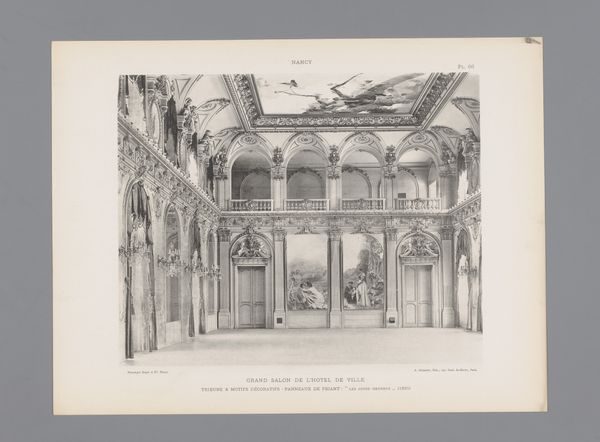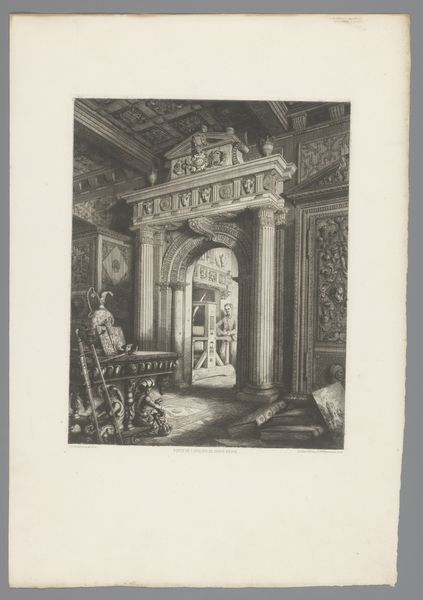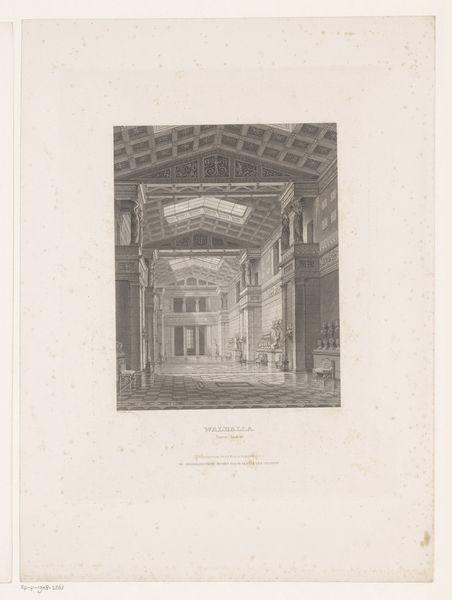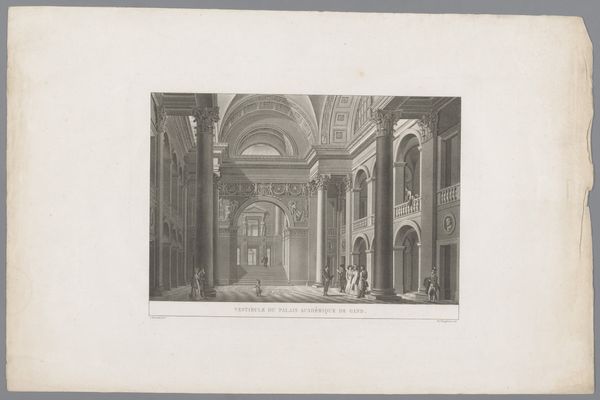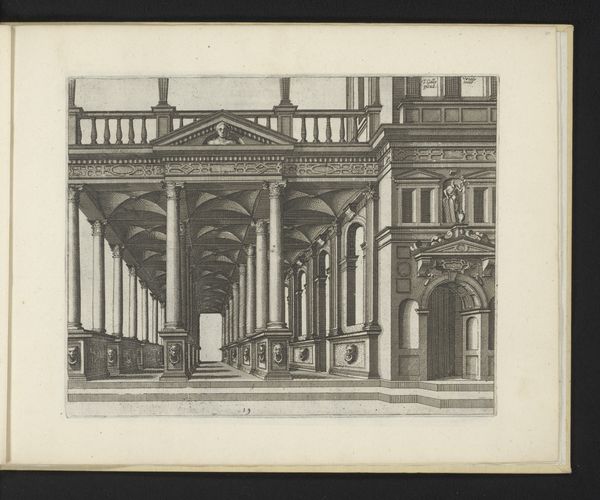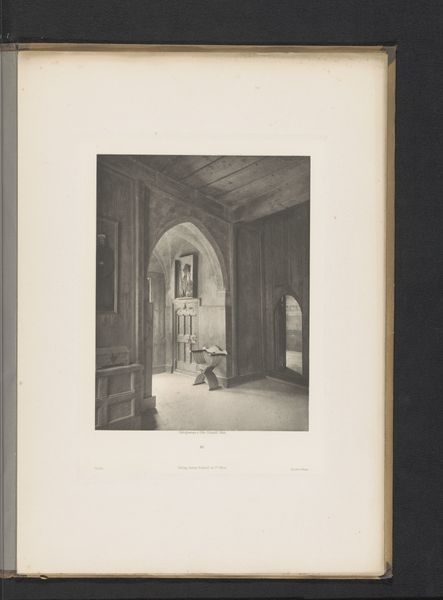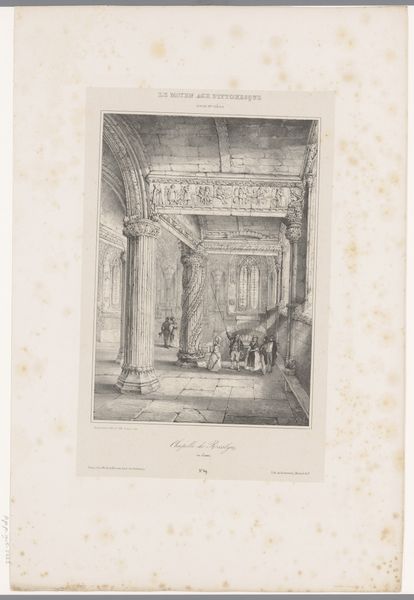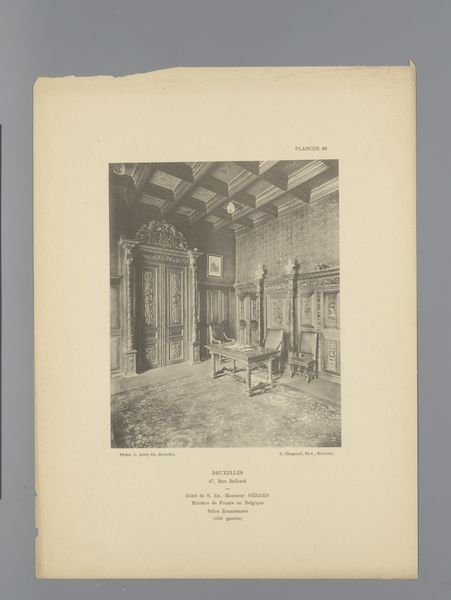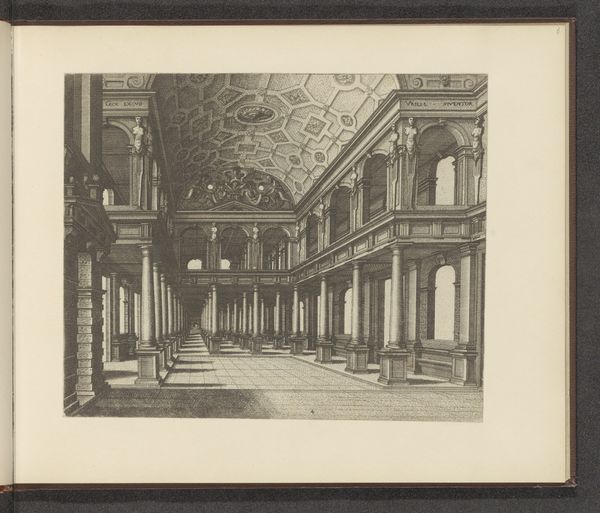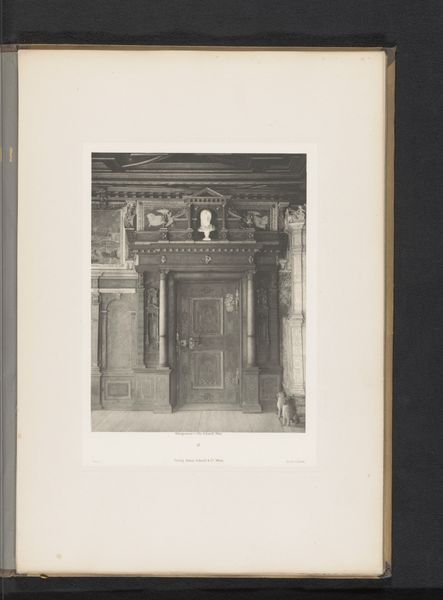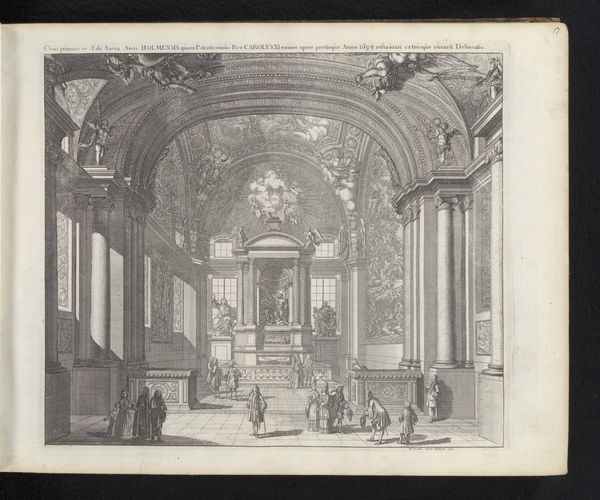
Plafondschilderingen en wandschilderingen in de Stams abdij in Stams, Oostenrijk before 1891
0:00
0:00
Dimensions: height 237 mm, width 187 mm
Copyright: Rijks Museum: Open Domain
Editor: So, this is a print entitled "Plafondschilderingen en wandschilderingen in de Stams abdij in Stams, Oostenrijk," created before 1891 by Otto Schmidt. The media used are engraving and architecture on paper. My first impression is the contrast between the architectural detail and the slight haziness, making me curious about how light and space are handled in this medium. What draws your eye when you examine this print? Curator: Initially, the composition itself strikes me. Notice how the artist employs a rigorous, almost mathematical perspective to contain the elaborate Baroque frescoes. This structured framing, presented in a monochromatic print, actually intensifies the contrasts between light and shadow. It is a dialectic of order and ornament. Does this contrast resonate with you as well? Editor: It definitely does! It is not exactly what you would expect, combining stark lines with intricate detail. I wonder, without color, how does Schmidt emphasize the richness of the original ceiling and wall paintings? Curator: It's achieved primarily through masterful use of tonal variation, coupled with the precision afforded by the engraving technique. Observe how Schmidt manipulates the density of the engraved lines to simulate the gradations of light across the surfaces, thus recreating a sense of depth and three-dimensionality that we usually perceive through color. Look at how the details in the darker spaces almost fade into the distance. Editor: It's like he is building the space purely through texture and shadow. Is that a typical method for prints of architectural spaces? Curator: The emphasis on form over pure representation is particularly prominent here. The success of this image relies on our understanding of the interplay between light and shadow, as well as positive and negative space. Schmidt invites us to decode the underlying formal structure, wouldn't you agree? Editor: Yes, definitely. It is less about the actual space, more about how it's depicted and how those formal decisions shape our perception. Curator: Exactly. It allows one to move beyond pure subject matter and examine form, structure, and their inherent expressive qualities. Editor: I came in looking at the cityscape, but leave seeing layers of construction, literal and figurative. Thank you!
Comments
No comments
Be the first to comment and join the conversation on the ultimate creative platform.

